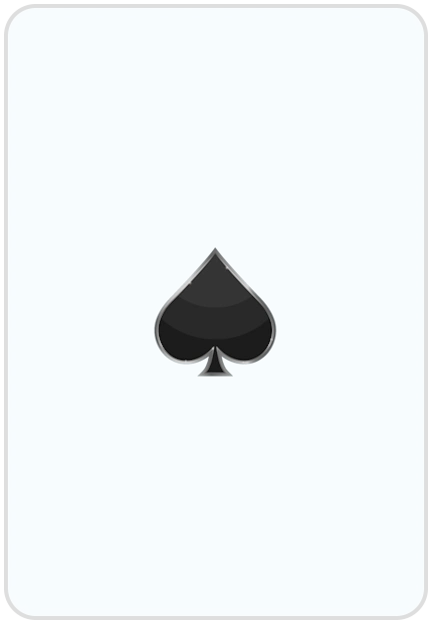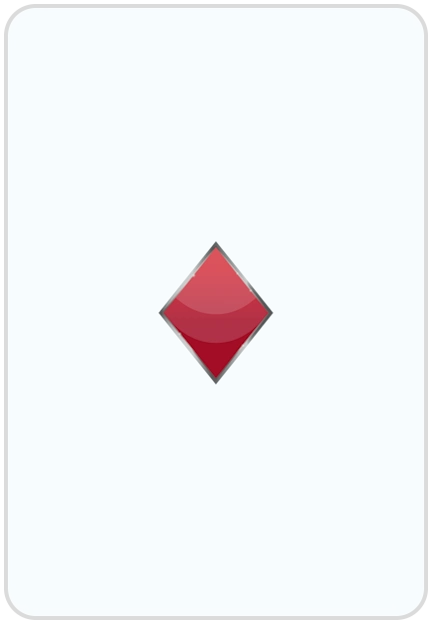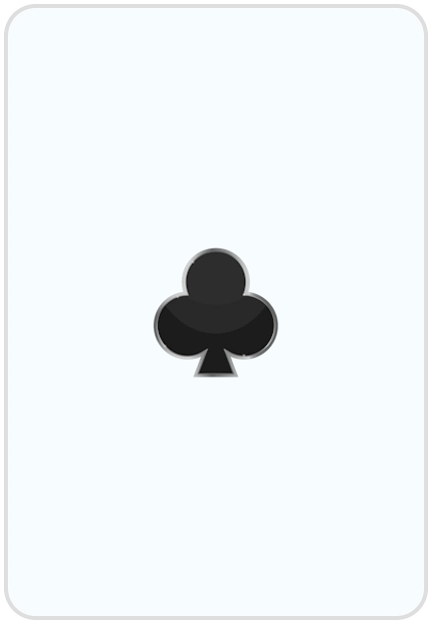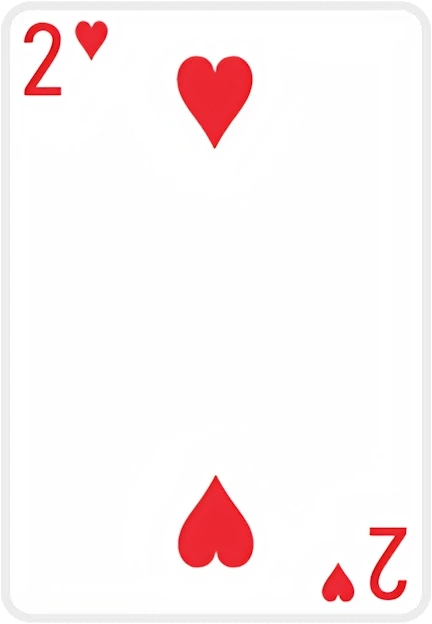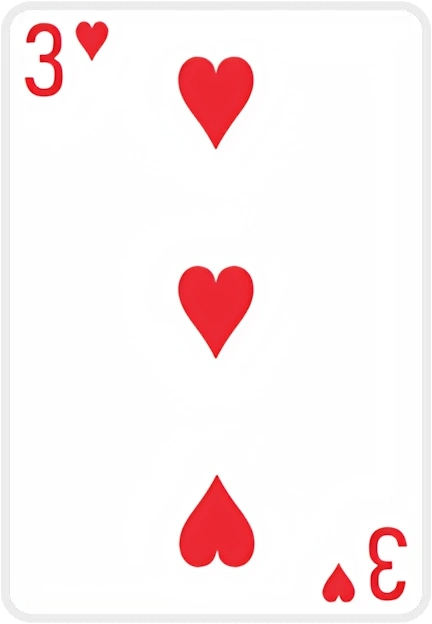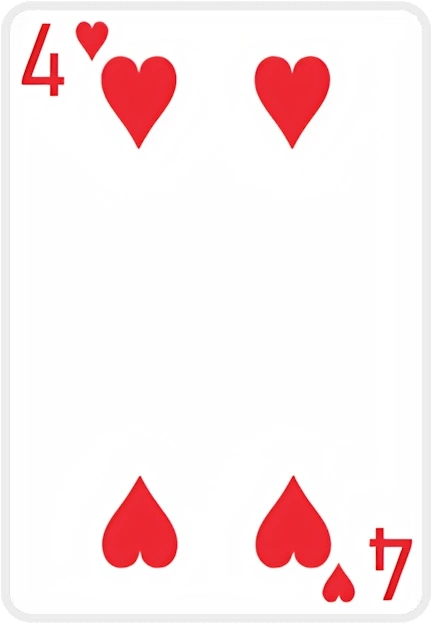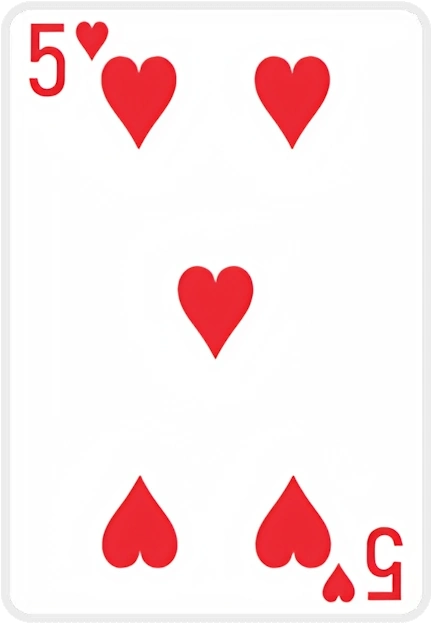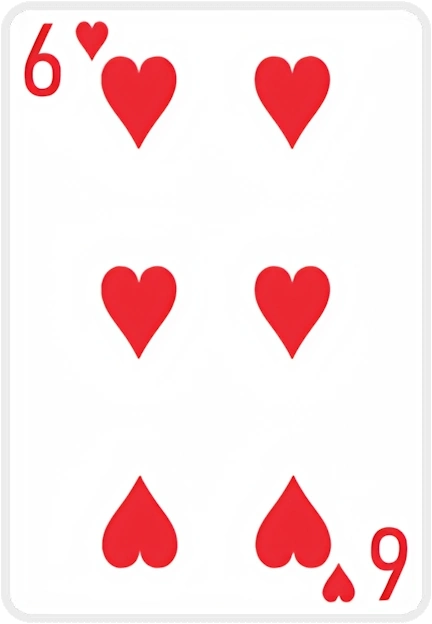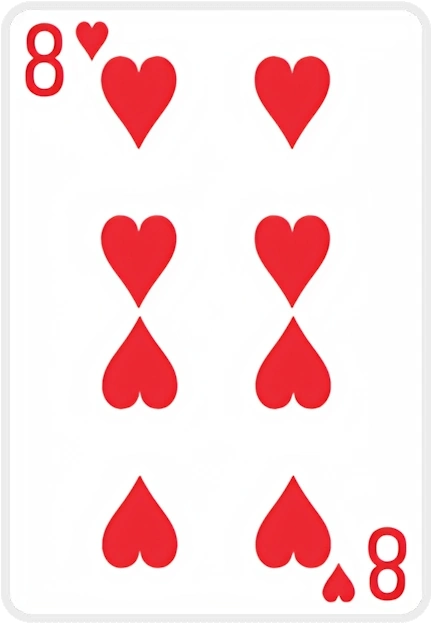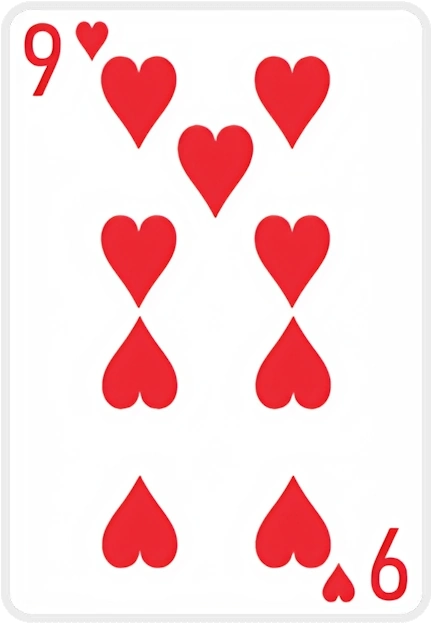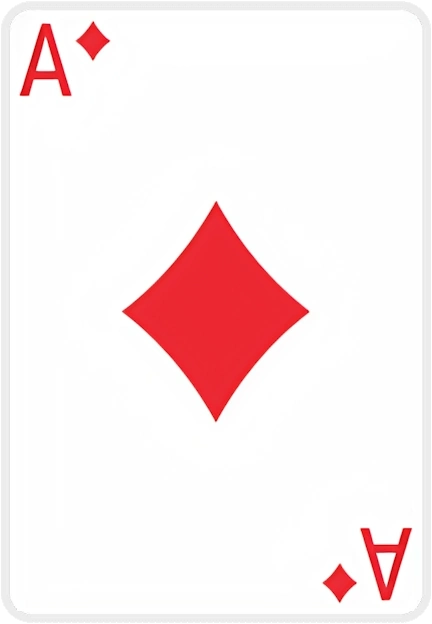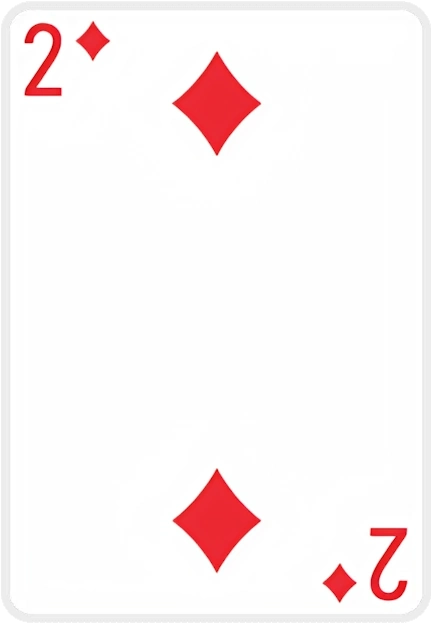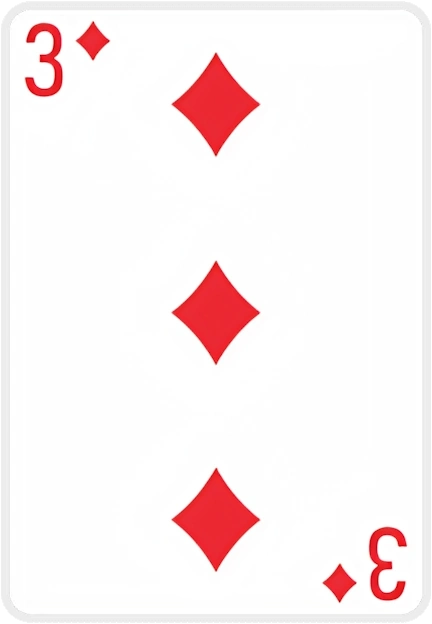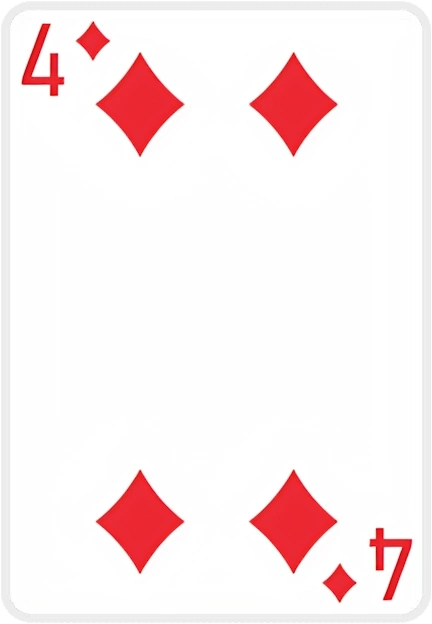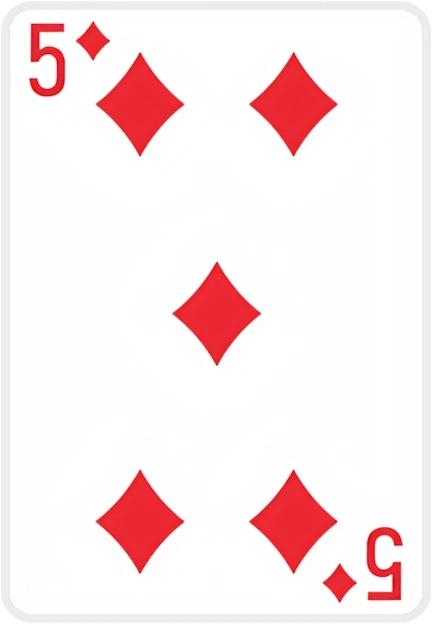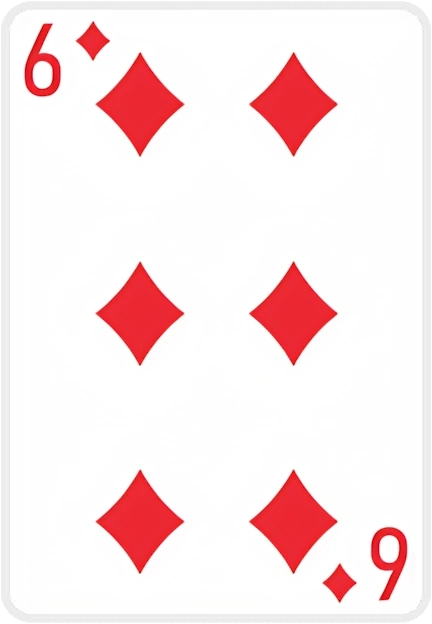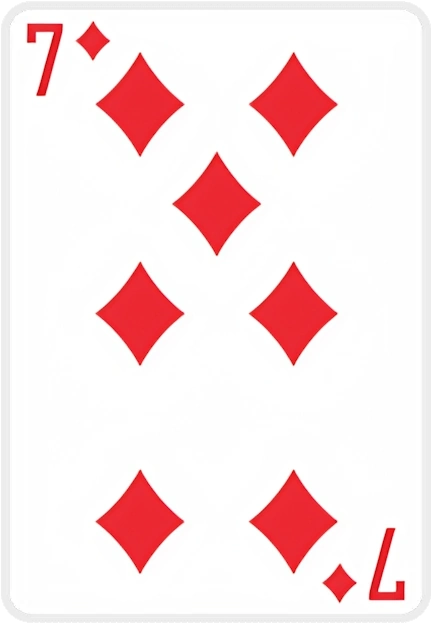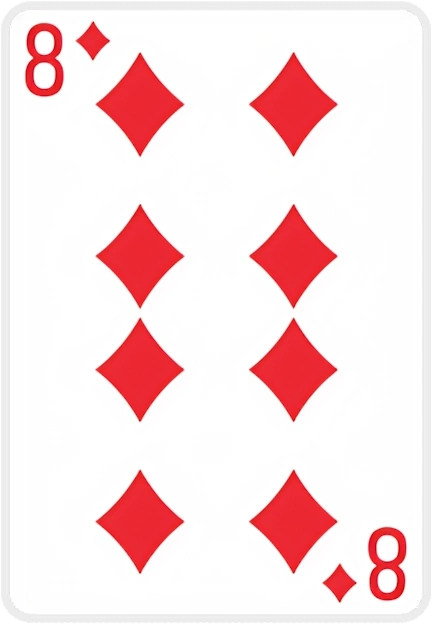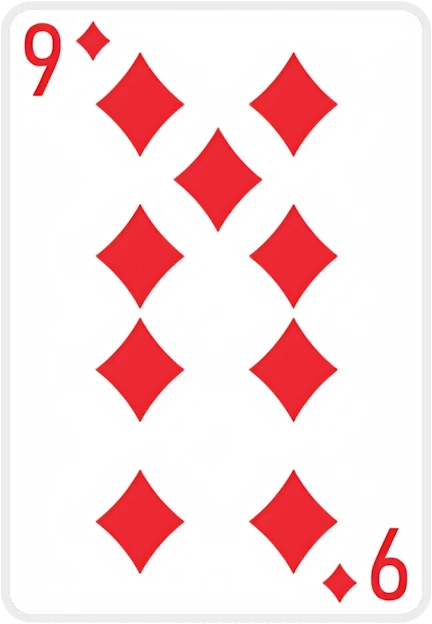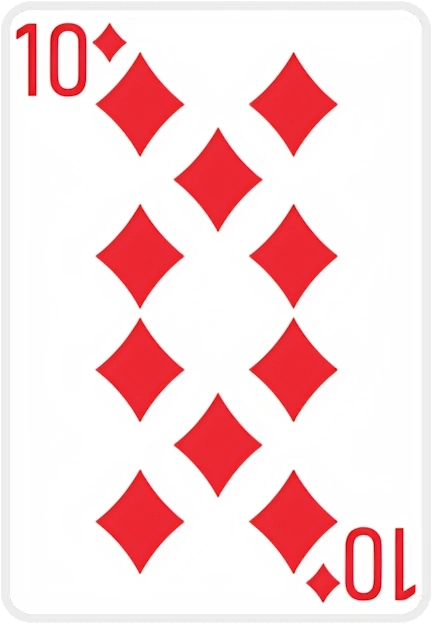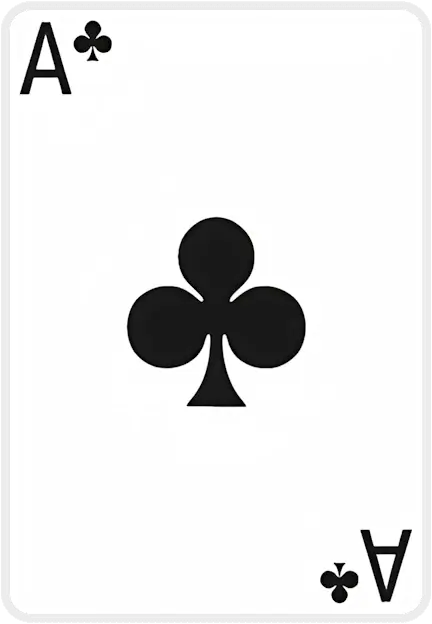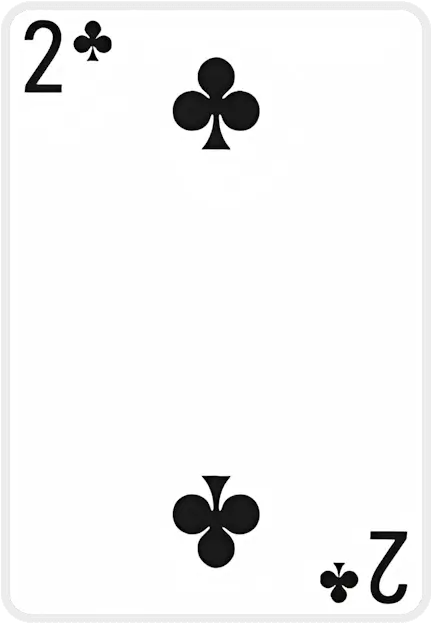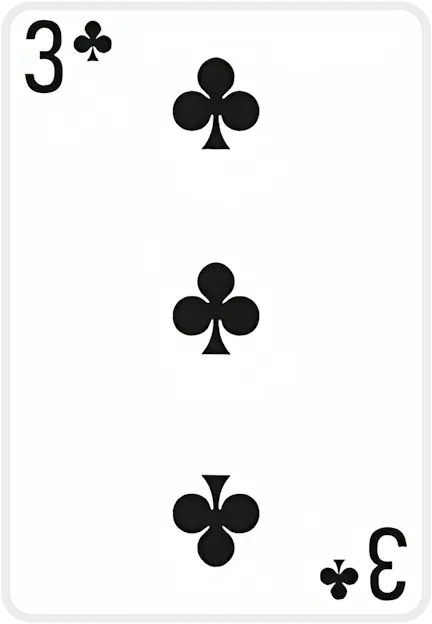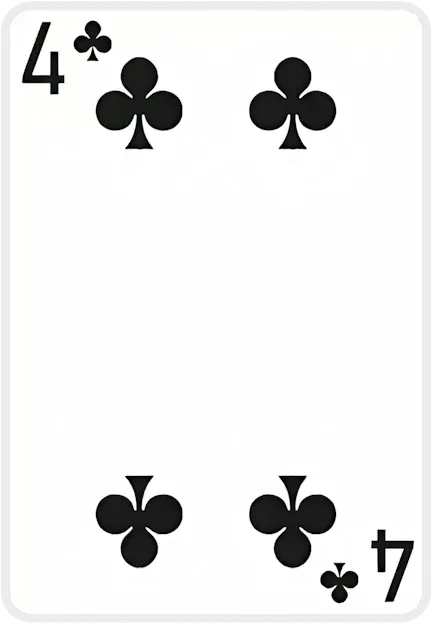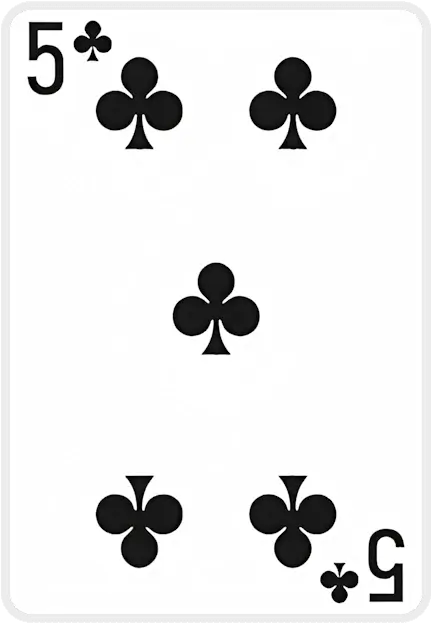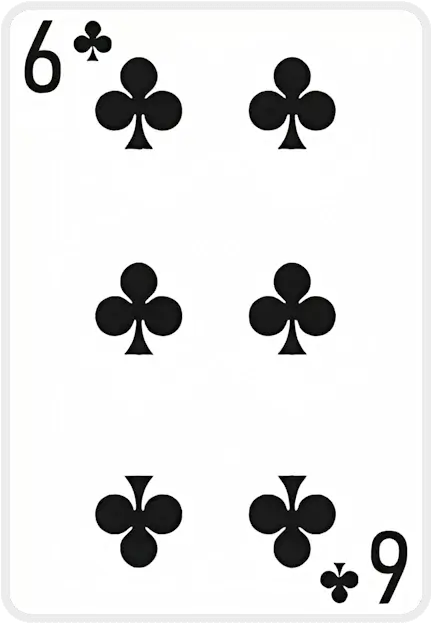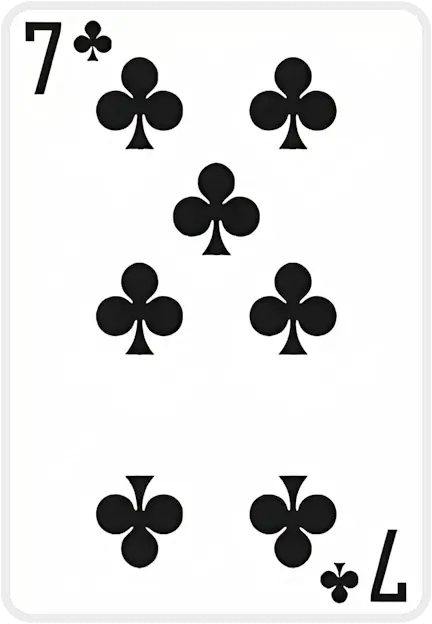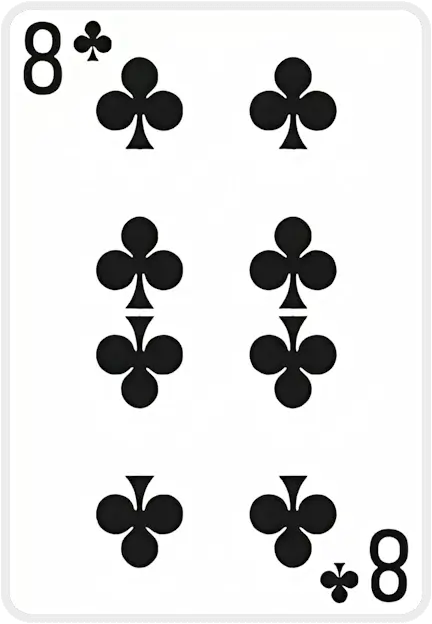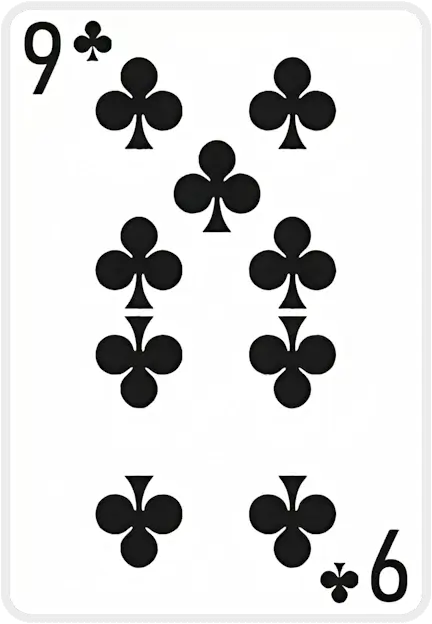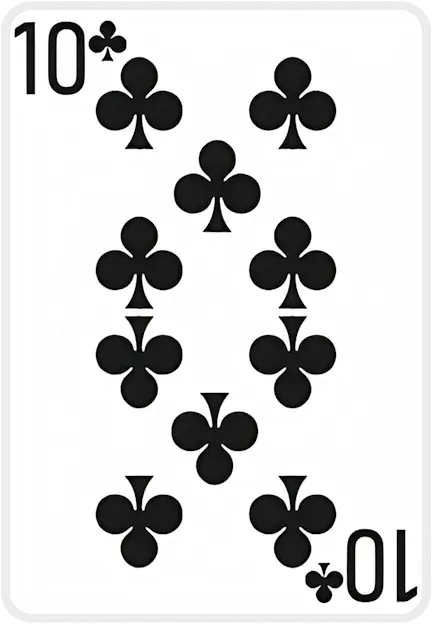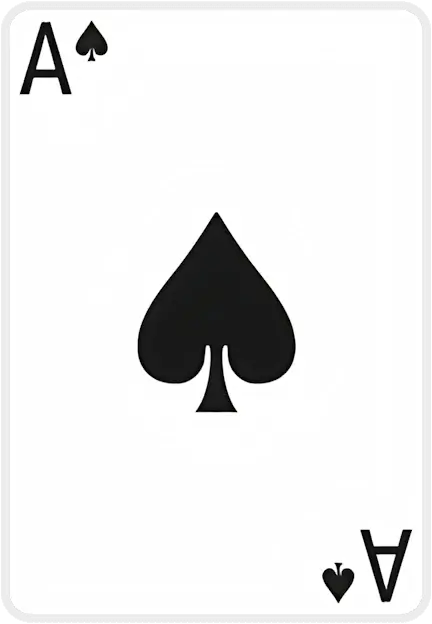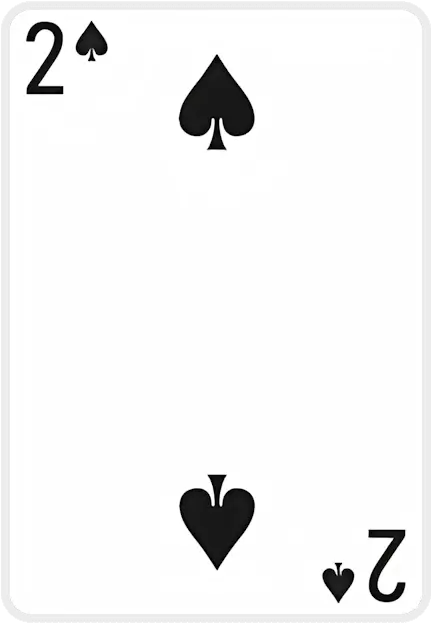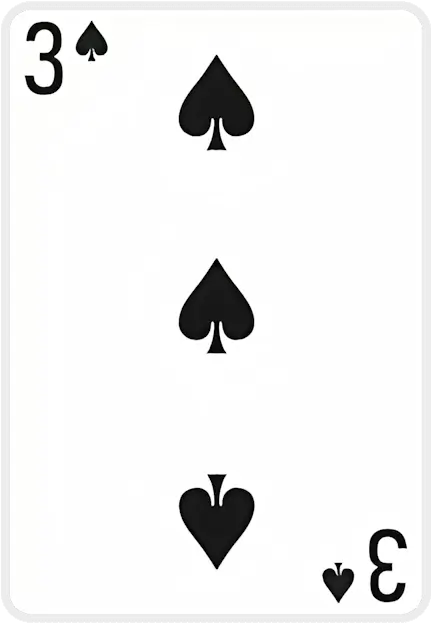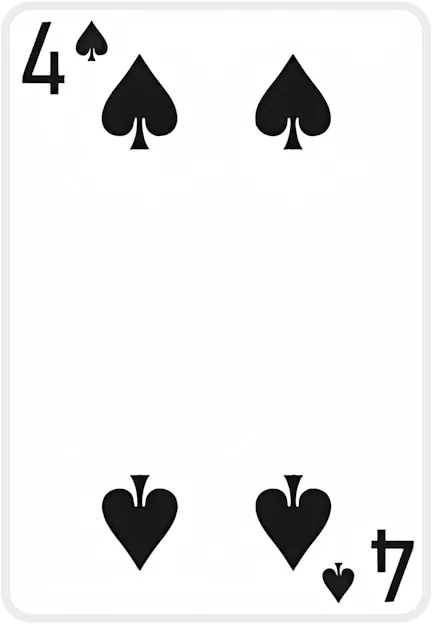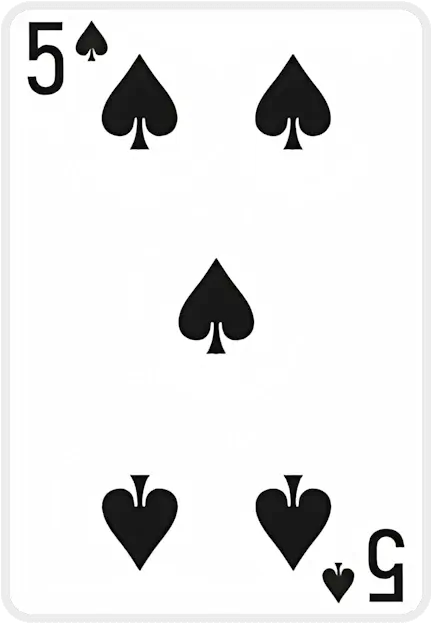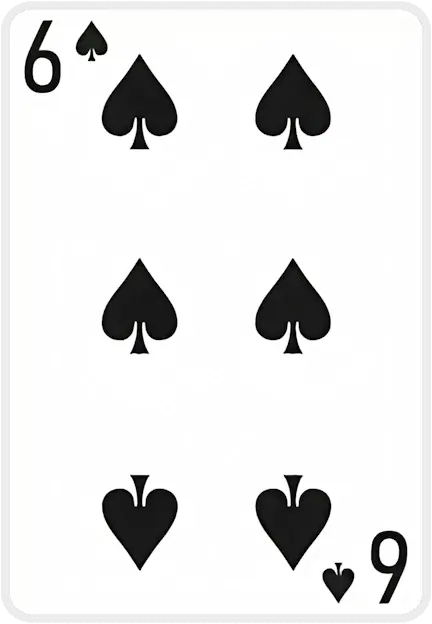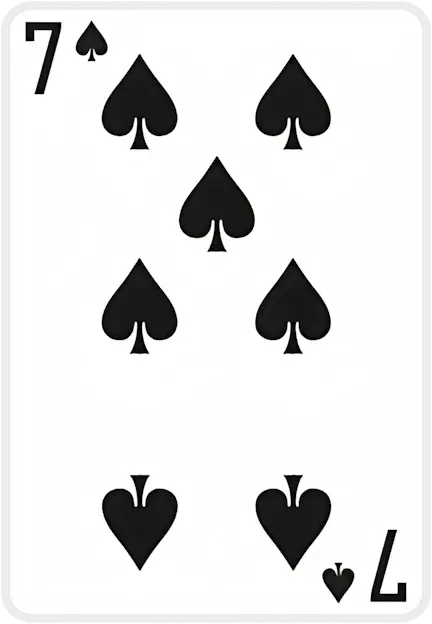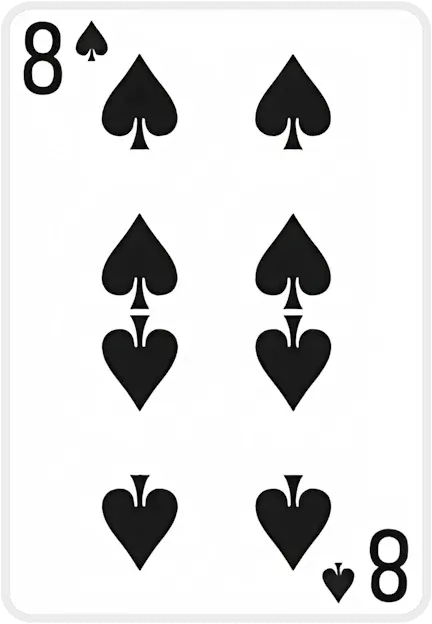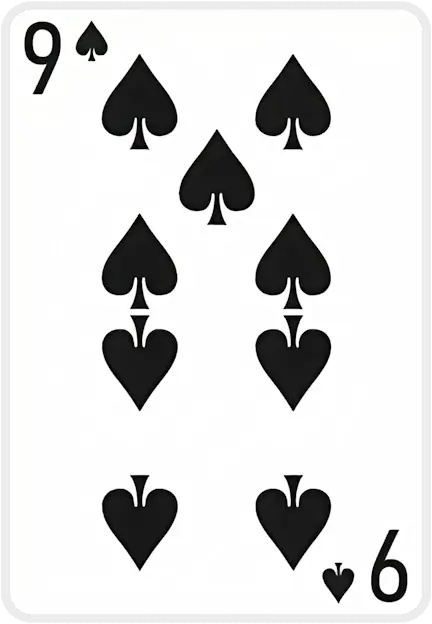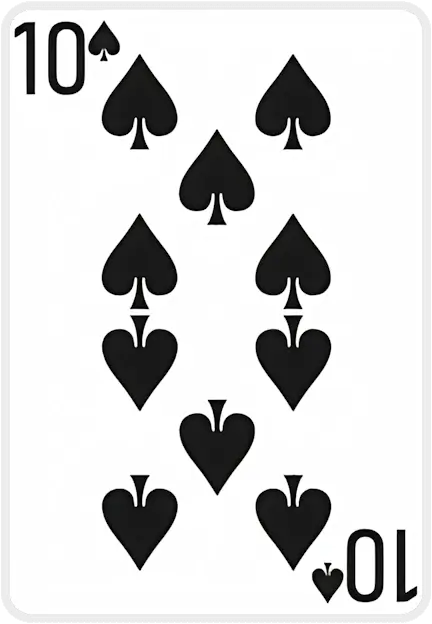ドロップできません。カードは反対のスートの色である必要があります
Cannot drop, your card needs to be one rank lower
Cannot move multiple cards to foundation
Card suit doesn't match foundation pile suit
Card can only be dropped on top of a card pile
Cannot deal cards when there are empty tableau piles
You can only move {0} card(s) at a time based on the current free cells and tableau
The cards don't add up to 13 and cannot be moved
The card is inaccessible and move cannot be performed
Cards must be in sequential order (one higher or lower)
Double Dot Solitaire
Double Dot Solitaire – Free Online Solitaire Game for Competitive Players
Introduction
Double Dot Solitaire is a free online solitaire game available to play on SolitaireX.io. It offers a unique twist on classic patience games by requiring players to build card sequences in increments of two, creating a distinct challenge and strategy. This browser-based solitaire variant is playable for free directly in your web browser on both desktop and mobile devices, with no downloads or installations needed. Despite its approachable rules and an exceptionally high win rate (around 98% solvable deals), Double Dot Solitaire appeals to competitive solitaire enthusiasts by providing a platform to hone skills, optimize move efficiency, and even compete for top scores.
How to Play
Figure: Initial layout of Double Dot Solitaire (one deck) – two foundation piles start with Aces and two with Twos, and eight tableau columns each begin with one card.
Objective: Like most solitaire games, the goal in Double Dot Solitaire is to move all the cards to the foundation piles, sorting them in the required order. You win once all 52 cards are on the foundations.
Layout & Rules: Double Dot Solitaire uses one standard 52-card deck. At the start, four foundation piles are set up with two Aces of one color and two Twos of the other color (one Ace and one Two from each suit color) dealt to them. There are also eight tableau piles below the foundations, each beginning with one face-up card, and the remaining cards form the stock. The detailed rules are as follows:
-
Foundations: There are four foundation piles. The left two start with an Ace and must be built up in suit by successive odd ranks (adding 2 each time: Ace, 3, 5, 7, 9, J, K, then continuing from 2, 4, etc.), while the right two start with a Two and are built up by successive even ranks (Two, 4, 6, 8, 10, Q, then looping to Ace, 3, etc.). In other words, each foundation pile progresses in steps of two (hence “Double Dot”), and cards added to a foundation must follow the suit of the pile. Once a card is placed on a foundation, it cannot be moved back to the tableau. The objective is to eventually build all foundation piles up until each pile contains 13 cards in the proper sequence.
-
Tableau: The game features eight tableau columns where cards can be moved around to free up needed cards and create sequences. Building on the tableau is down by twos in rank, and can be done regardless of suit. This means any card you place on a tableau pile must be exactly two ranks lower than the card it’s placed on. For example, a 6 can be played on an 8, and a Queen can be played on an Ace in the tableau sequence. Sequence wrapping is allowed when needed (e.g. you may place a Queen on an Ace, treating Ace as one rank below 2 for this purpose). You may move single cards or groups of cards as long as they form a valid sequence down by twos. If a tableau column becomes empty, any card or any legal sequence of cards can be moved into that space – there is no restriction on what can fill an empty column. This rule provides significant flexibility in rearranging the tableau.
-
Stock & Dealing: The remaining undealt cards form the stock pile. Whenever you have exhausted all possible moves on the tableau, you can click or tap the stock to deal one new card onto each tableau pile from the stock. (Note that you should ensure no tableau pile is empty when dealing from the stock; every tableau column must have a card or sequence in it before you deal a new round of cards, otherwise the deal may be blocked.) There are no redeals – the stock can be passed through only once. Continue dealing cards and moving cards on the tableau or to the foundations whenever possible. The game ends successfully when all cards are moved up to the foundation piles.
In summary, Double Dot Solitaire’s rules create an interesting balance: you can build cards freely by twos on the tableau (without worrying about suit), and you have open mobility to move sequences and fill spaces with any cards, making almost every deal winnable with the right strategy. The challenge lies in managing the order of moves and the timing of stock deals to ensure you can eventually uncover and play every card.
History
The exact origins of Double Dot Solitaire are not as deeply documented as some classic solitaire games, suggesting it is a modern variant likely devised by game developers or enthusiasts in the 20th century. Double Dot’s concept of building in increments of two is closely related to the traditional two-deck game Odd and Even (also known as Even and Odd), which has long been part of solitaire literature. In Odd and Even, players similarly build foundations by twos (with one set of foundations starting at Aces and the other at Twos), but use two decks and a different layout. Double Dot Solitaire can be seen as a single-deck adaptation of this idea, simplifying the setup while preserving the distinctive “skip by 2” sequencing. In fact, modern solitaire collections explicitly link the two games – for example, Pretty Good Solitaire (a comprehensive digital solitaire suite) lists Odd and Even as a closely related game to Double Dot.
Double Dot Solitaire likely first gained popularity through inclusion in digital solitaire collections and apps. It appears in well-known software packages (such as the BVS Solitaire Collection and Pretty Good Solitaire) and on various online platforms. These implementations characterize Double Dot as an “easy” solitaire variant with a very high probability of winning – roughly 98% of deals are winnable with optimal play. This near-certain solvability has made the game appealing to players who enjoy a more relaxed patience game or who want to focus on speed and strategy rather than luck. Over time, Double Dot has become a favorite for those looking to compete for fastest solve times or fewest moves, since the challenge lies not in if you can win, but how efficiently you can win. Today, SolitaireX.io carries on this tradition by offering Double Dot Solitaire free in the browser, complete with statistics tracking and leaderboards for an added competitive dimension.
Tips and Strategies
Even though most deals in Double Dot Solitaire are winnable, adopting smart tactics will help you win more efficiently and achieve higher scores or faster times – crucial for competitive play. Below are some tips and strategies for skilled players:
-
Prioritize Foundation Moves: Because the foundations build up by twos in suit, it’s often advantageous to move cards to the foundation whenever they become available and can be placed. Playing to the foundation frees up tableau space and gets you closer to victory. There is no penalty for moving cards up, and since you cannot remove cards from the foundation once placed, you generally don’t need to hesitate (the sequences are fixed and won’t require undoing). Always check the tableau for any card that can directly go to a foundation pile and move it there promptly – this will open up hidden cards and additional moves.
-
Use Empty Columns Wisely: An empty tableau column is a powerful asset in Double Dot Solitaire. Any card or valid sequence can fill an empty space, so clearing a column (by moving its last card onto another pile or to the foundation) gives you a temporary holding area to manipulate other sequences. Strategy: try to empty a tableau pile early if it helps expose hidden cards, and then use that free column to park a troublesome sequence or to rearrange cards. For example, you might move a whole descending-by-two sequence onto an empty column to uncover a particular card needed elsewhere. Remember that before dealing new stock cards, all tableau columns must be filled (no empties) to allow the deal – so always fill your empty columns with something (even a single low card or a sequence you don’t immediately need) prior to clicking the stock. This ensures you get the maximum number of cards dealt in each round and avoid missing out on cards because of empty pile restrictions.
-
Time Your Stock Deals: Since there are no redeals in this game, you get only one pass through the stock. Make it count. Before dealing from the stock, exhaust all possible moves on the tableau – build down sequences, move cards to foundations, and create empty spaces (then fill them as needed). Every time you deal new cards, it’s essentially advancing the game state closer to the end, so you want the tableau to be in the best shape possible to accommodate those new cards. A good habit is to only click the stock when you are confident no further moves can be made with the current layout. This maximizes the effectiveness of each deal and increases your chances of easily placing the newly dealt cards. Additionally, deal one round at a time and then pause to make all available moves before dealing again.
-
Plan for the “Skip” in Ranks: The defining feature of Double Dot Solitaire is the two-rank step in building sequences. Keep this in mind as you plan your moves. For instance, if you have a 7 buried in a column and an 5 of the same suit is on a foundation, you know eventually that 7 will need to go to the foundation (since the sequence from 5 would require 7 next). It might be wise to work on freeing that 7 sooner rather than later. Similarly, on the tableau, remember that after a Queen comes an Ace in the descending sequence (Q → A as a valid move), and after a King on a foundation pile comes a 2 (K wraps to 2 in the sequence). These wrap-around mechanics can be used to your advantage: you might position an Ace strategically under a Queen in the tableau if you anticipate needing that sequence, or hold off moving a King to a foundation until a Two is available. In short, always be aware of which card “jumps” are coming up next in each sequence (both tableau and foundation) so you can orchestrate your moves to accommodate them.
-
Optimize for Speed (Competitive Play): If you’re aiming for leaderboard positions or just personal best times, efficiency is key. Make use of the Undo and Hint features (if available on SolitaireX.io) to refine your strategy – for example, you might undo a sequence of moves to try a different approach that saves more time or moves. Aim to minimize unnecessary moves: since any suit can be placed in tableau, choose moves that immediately free hidden cards or build foundations rather than shuffling cards back and forth. Keeping tableau piles as low as possible (fewer cards) will make it quicker to spot available moves. Finally, practice makes perfect: as you play multiple games, you’ll start to recognize common patterns and optimal sequences of moves. Given that nearly every deal is winnable, focus on how quickly and smoothly you can win. Over time you will develop an intuition for Double Dot Solitaire that lets you play rapidly yet accurately – a must for climbing the competitive rankings.
By following these strategies, you can improve your mastery of Double Dot Solitaire, turning this “easy to win, hard to win quickly” game into a personal battleground for honing speed and decision-making. Competitive players will find that shaving seconds off their time or reducing the number of moves takes planning and foresight, which these tips help cultivate.
Why Play on SolitaireX.io
SolitaireX.io is the ideal platform to enjoy Double Dot Solitaire, especially for players seeking a smooth, competitive, and convenient experience. Here are several reasons to play Double Dot (and other solitaire games) on SolitaireX:
-
Free Access, No Downloads: SolitaireX offers Double Dot Solitaire completely free of charge. You can play unlimited games in your web browser with no downloads or installations required and no paywalls limiting content. The game loads instantly on the website – just click and play.
-
Browser-Based & Mobile Optimized: The game is designed as a browser-based solitaire, meaning it runs seamlessly on any modern web browser. SolitaireX.io is fully optimized for both desktop and mobile play. Whether you’re on a Windows PC, Mac, tablet, or smartphone, you can play Double Dot Solitaire on the go as a mobile solitaire game or at home on a larger screen. The responsive design and touch-friendly interface on mobile devices ensure a comfortable gaming experience anywhere, anytime.
-
Competitive Features and Stats: Playing on SolitaireX lets you take advantage of integrated competitive features. The platform provides detailed statistics for your games and supports global leaderboards for Double Dot Solitaire. If you create a free account (optional), you can track your win/loss record, fastest completion times, number of moves, and even engage in friendly competition with other players. Leaderboards allow competitive solitaire players to see how they rank against others – you can strive to improve your standing by achieving faster times or longer win streaks. This competitive aspect transforms Double Dot into not just a solitary experience but a contest of skill and efficiency.
-
User-Friendly Interface: SolitaireX.io prides itself on a clean, intuitive interface for all its games. In Double Dot Solitaire, you’ll find helpful features such as undo and hint options, smooth drag-and-drop card movement, and adjustable settings (e.g., turning sound on/off, toggling autoplay, or choosing card designs). The interface remains uncluttered and ad-free, allowing you to focus on the game itself. For those who wish to save progress or compete formally, a quick registration enables score saving and participation in leaderboards, but if you prefer, you can play anonymously as well. The combination of ease-of-use and rich features makes SolitaireX a top choice for both casual play and serious practice.
In summary, SolitaireX.io provides a robust and accessible environment to play Double Dot Solitaire. From its free, no-hassle access and cross-device compatibility to the competitive tracking and polished gameplay features, the platform enhances the overall experience of this game. It’s an excellent choice for anyone looking to enjoy Double Dot Solitaire in the browser, whether you’re a newcomer learning the ropes or a competitive player aiming for the top of the leaderboard.
Related Games in the Group Games Collection
Double Dot Solitaire is part of SolitaireX’s Group Games collection, a category that showcases a variety of card games and solitaire variants beyond the well-known classics. This collection allows players to discover and enjoy many other unique games that fall outside the standard categories (like Klondike, Spider, FreeCell, etc.). If you’ve mastered Double Dot or simply want to try a different challenge, the Group Games section offers plenty of alternatives to keep your interest. These range from unusual single-deck solitaire puzzles to other card games that test your strategy and skill in new ways.
For example, one popular title in the collection is Accordion Solitaire, a distinctive patience game where the goal is to “compress” the entire deck into one pile by stacking cards of the same rank or suit. This game plays very differently from Double Dot, emphasizing careful planning to merge piles and remove cards. Another intriguing game you’ll find is Crazy Quilt Solitaire, named for its quilt-like layout of cards. Crazy Quilt presents a visually striking puzzle in which you must remove all cards by pairing them in matching ranks, navigating a patchwork layout that requires strategic thinking. Both Accordion and Crazy Quilt offer fresh twists on solitaire rules, rewarding players with new patterns of play and problem-solving experiences.
Aside from these, the Group Games collection on SolitaireX.io includes many other lesser-known or specialty games – for instance, Calculation Solitaire (a math-oriented game of building foundations in arithmetic sequences), Gaps (Spaces) Solitaire (where you rearrange cards in sequence by filling gaps), and more. Each game in this category comes with its own set of rules and challenges, ensuring that avid card players and solitaire fans always have something new to explore. By trying out related games like those in the Group collection, you can broaden your skills, discover new favorites, and enjoy the rich variety that the world of solitaire has to offer – all for free on SolitaireX.io.
Play Double Dot Solitaire now and experience this competitive, engaging solitaire variant for yourself, or browse the Group Games collection to find your next favorite card game. Happy gaming!
Case Studies
All figures below come directly from our database. Using first-party data ensures every insight is evidence-based, up-to-date, and privacy-respectful.
| Game Tier | Stand-out Titles | Win Rate |
|---|---|---|
| Quick Wins | Spider (1 Suit), Hole-in-One, TriPeaks | 70–84% |
| Fair Challenges | Solitaire (Draw 1) – 913 k plays FreeCell, Golf |
45–63% |
| Expert-Level | Spider (4 Suits), Forty Thieves, Double Scorpion | ≤11% |
Curious which moves turn the odds in your favor? Explore all the data & strategies →
What people say about us
Interview with Beverley Walker-Daury
At 87, Beverley Walker-Daury shares how SolitaireX brings joy, companionship, and purpose to her days in a retirement home.
Player Interview: Poul Andersen
Poul Andersen shares how playing SolitaireX helps him keep his brain sharp and active.
Player Interview: Peter Gross
Peter Gross, 81, shares how SolitaireX became his go-to place for relaxing Freecell games and friendly competition.
Player Spotlight: St0Sh0’s Record-Breaking Runs on SolitaireX
We sit down with speed-solitaire sensation St0Sh0 to talk record times, favorite variants, and why SolitaireX is his go-to card-game hub.
Fresh from the SolitaireX Blog

Decks & Destinations: The Solitaire Traveler Series Part 5: Berlin — Strategy & Culture Walks
Berlin’s rhythm of reflection and structure pairs perfectly with Solitaire’s calm logic. This guide invites travelers to explore the city’s culture and canals with a few mindful moves between each stop.

Decks & Destinations: The Solitaire Traveler Series Part 4: Tokyo – Mindful Play in a Fast City
Tokyo’s fast pace hides countless moments of calm — perfect for a mindful round of Solitaire. This traveler’s guide pairs iconic spots with short, focused play sessions to restore clarity on the go.

Decks & Destinations: The Solitaire Traveler Series Part 3: Seattle — The PC-Era Vibe
Seattle’s rain-washed calm pairs perfectly with Solitaire’s quiet focus. This traveler’s guide shows how to blend sightseeing, coffee breaks, and short, finite puzzles into a mindful PC-era rhythm.

Decks & Destinations: The Solitaire Traveler Series Part 2: London – From “Patience” to Presence
London’s slower moments pair perfectly with Solitaire—once known locally as “Patience.” This traveler’s guide blends calm city rhythms with mindful card play to help you recharge between adventures.
Latest guides crafted by Stoyan Shopov and Kalin Nikolov
Golf Solitaire Mastery: Strategy, Stats & Flow
Deal 7 columns of 5 face‑up cards (35 total). The remaining 17 cards*form the stock; flip the first stock card to start the waste. You may move only exposed tableau cards, and only if the rank is exactly one higher or lower than the waste top. Suits don’t matter. When no move exists, flip a new waste card. Clear all tableau cards to win.
TriPeaks Solitaire Mastery: Strategy & Analytics
Two peaks are dust; one stubborn ridge remains. Your waste shows a 9. The tableau flashes 10‑J‑10‑9‑8 like a heartbeat. You nudge the 10, feel the cadence lock in, and—without overthinking—trace a neat descent that crumbles the last peak. That tiny spark of *flow* is why TriPeaks hooks serious players: rhythm, restraint, and the rush of a run that arrives exactly on time.
Pyramid Solitaire Mastery: Strategy, Stats & Joy
Picture the pyramid down to its last stubborn tier: a Queen pinned beneath a ridge, a lone Ace on the waste, and a King begging to be burned for tempo. Heartbeat, breath, click—then the whole structure yields in a rush. If you’ve hit that razor‑edge finale, you already know Pyramid’s secret: small decisions, made in the right order, change everything.
FreeCell Solitaire Mastery: Strategy & Analytics Guide
I have a 15 years personal, lived experience—picture a scene built from thousands of session logs and notes from serious players: It’s late, and the board looks jammed. You clear a single column, free one cell, and suddenly a 9♣‑8♦‑7♣‑6♦ chain glides into place, untying the knot you stared at for ten minutes. The rush isn’t luck—it’s the quiet pleasure of a plan snapping into focus. When did FreeCell last feel less like “killing time” and more like practicing a craft you can actually master?
Media About Us
0


